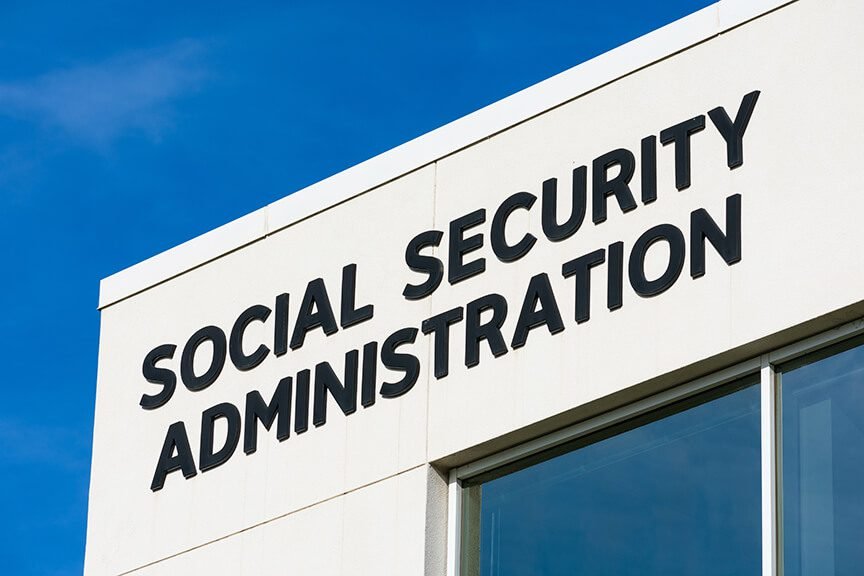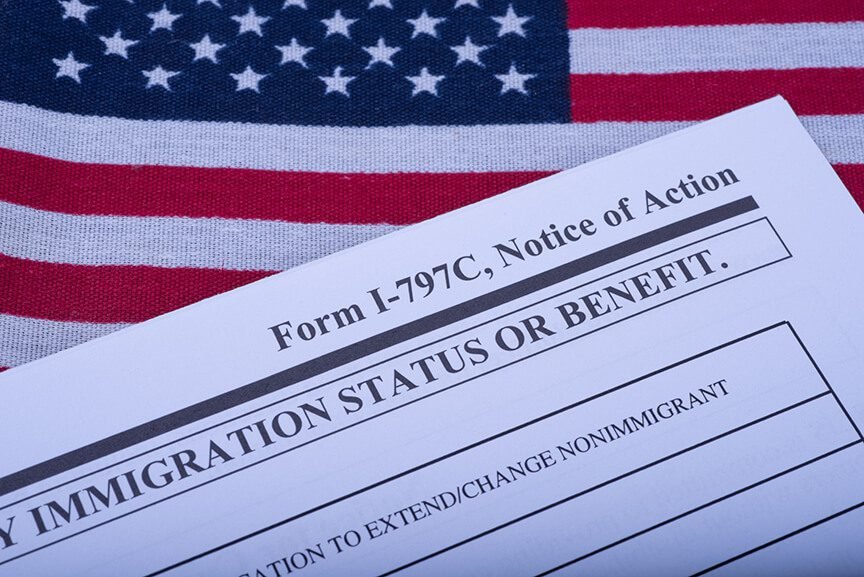Welcome to your comprehensive guide on the various types of immigrants in the United States. Immigration is a key part of our nation’s diversity, and it’s important to have a basic understanding of immigration law, or at least the legal definitions and circumstances surrounding different immigrant categories.
In this article, we will explore the various legal categories of immigrants, including H1 and H2 visa holders, and discuss the concept of blended families, where children may have legal status even if their parents are undocumented.
We will also provide information on the government benefit programs available to immigrants, ensuring you have the knowledge to navigate these resources effectively.

Government Definitions of Your Immigration Status
When it comes to immigrants in the United States, it’s important for you to understand the various categories that define your legal status and circumstances. Knowing these types will help you navigate the challenges you may face and determine the benefits available to you.
Legal Permanent Residents (LPRs)
As a Legal Permanent Resident, also known as a green card holder, you have been granted authorization to live and work permanently in the United States. You have successfully completed the immigration process and, similar to a U.S. citizen, you have certain rights and responsibilities. You can apply for most government benefits, including healthcare programs like Medicaid and Children’s Health Insurance Program (CHIP).
Refugees
If you are a refugee, it means you have fled your home country due to fear of persecution based on your race, religion, nationality, political opinion, or membership in a particular social group. You sought safety and protection in the United States and have been granted refugee status after a thorough screening process. Upon arrival, you receive assistance and support through the Refugee Cash and Medical Assistance program. You also have access to benefits such as cash aid and healthcare.
Asylees
As an asylee, you have sought protection in the United States for the same reasons mentioned above. You applied for asylum while already present in the country illegally or at a port of entry. Once your asylum request is granted, you have the right to work and can apply for government benefits, including Supplemental Nutrition Assistance Program (SNAP) and Temporary Assistance for Needy Families (TANF).
H-1B Visa Holders
If you are a lawful permanent resident in the United States on an H-1B visa, it means you are an employee in a specialized occupation. You possess specialized knowledge or skills that are in demand. As an H-1B visa holder, you are eligible to work and reside in the United States temporarily. However, you may have limitations in accessing certain government benefit programs.
H-2 Visa Holders
The H-2 visa program allows employers to hire foreign workers like you for temporary non-agricultural jobs. If you hold an H-2A visa, you work in the agricultural sector, while an H-2B visa is for non-agricultural workers. You fill positions that employers struggle to fill with U.S. workers. As an H-2 visa holder, you are entitled to certain labor protections but may have limited access to government benefit programs.
Understanding the visa and status types are important as you search for government benefit programs to help you and your family. In the following sections, we will explore the eligibility criteria and available benefit programs for each group in greater detail.

Blended Families or Mixed-Status Families
In a mixed-status family, there are individuals with different immigration statuses living together. This situation can arise when some family members, such as children, have legal status, while others, like parents, have undocumented immigrant status themselves. Navigating the complexities of a mixed-status family requires understanding the unique challenges that arise and exploring potential solutions.
What is a Blended Family?
A blended family refers to a family unit composed of individuals who are related by marriage, partnership, or through the formation of a new family. In the context of immigration, a blended family involves the combination of individuals with different immigration statuses. For example, it could include U.S. citizen children with non immigrants and undocumented parents, or legal permanent resident parents with undocumented children.
Children with Legal Status
If you are a child with legal immigration status, such as being born in the United States, you automatically acquire U.S. citizenship regardless of your parents’ immigration status. As a U.S. citizen child in a mixed-status family, you have certain rights and privileges, including access to government benefits and services available to all citizens.
Parents That are Undocumented Immigrants
If you are a parent with undocumented status in a mixed-status family, it’s important to be aware of the potential challenges you may face. Undocumented individuals often encounter obstacles such as limited job opportunities, fear of deportation, and difficulties accessing certain benefits. However, it’s important to explore available resources and support networks that can provide assistance and guidance in navigating these challenges.
Your family may be able to receive assistance through the child that has LPR or citizenship. Often for programs such as SNAP or Medicaid, children do not have to go through the standard 5 year wait to access Federal benefits programs.
Once they have qualified for one type, they are eligible for other programs as well (such as SNAP making them eligible for the Lifeline Program).
Note that this does not mean the benefits will cover the entire family, even though it does provide some support to lower the family’s financial burden.
Challenges for Family Members and Ways to Overcome Them
Living in a mixed-status family can present unique challenges. These challenges may include financial strain, limited access to healthcare, fear of separation, and limited educational opportunities. However, there are ways to overcome these obstacles. Seeking legal advice from immigration attorneys or organizations can help you explore options for obtaining legal status or finding temporary solutions, such as applying for Deferred Action for Childhood Arrivals (DACA) or seeking protection under Special Immigrant Juvenile Status (SIJS) for eligible children.
Options for Parents to Obtain Lawful Permanent Resident Status
For parents with undocumented status, there may be pathways to becoming lawful permanent residents or even a United States citizen. These options include family-based petitions, seeking sponsorship from employers, or exploring avenues for asylum or refugee status. It is crucial to consult with immigration attorneys or reputable legal aid organizations to understand the specific requirements, processes, and potential risks associated with each option.

Government Benefit Programs for Immigrants
When it comes to government benefit programs, there are several options available to assist immigrants like you. These programs aim to provide support and help meet essential needs for individuals and families facing financial challenges. Here are some key programs you should be aware of:
Supplemental Nutrition Assistance Program (SNAP)
SNAP, also known as food stamps, offers nutrition assistance to eligible individuals and families. If you meet the income and resource requirements, you can receive an EBT card that can be used to purchase food items at authorized retailers. Applying for SNAP can help ensure that you and your family have access to nutritious meals.
Temporary Assistance for Needy Families (TANF)
TANF is a program that provides temporary financial assistance to families in need. It offers cash benefits to help cover essential expenses like rent, utilities, and childcare. Depending on your situation and state regulations, TANF can provide crucial support during challenging times.
Children's Health Insurance Program (CHIP)
CHIP provides affordable health insurance for children in low-income families who do not qualify for Medicaid. This program ensures that children have access to necessary healthcare services, including doctor visits, immunizations, prescriptions, and emergency care.
Medicaid and Medicare
Medicaid is a federal and state program that offers healthcare coverage to low-income individuals and families. It provides comprehensive medical services, including doctor visits, hospital care, and prescription medications. On the other hand, Medicare is a program primarily for individuals aged 65 and older or those with certain disabilities. It helps cover medical expenses, including hospital stays, doctor visits, and prescription drugs.
Women, Infants, and Children (WIC)
WIC is a program specifically designed to support the nutritional needs of pregnant women, new mothers, and young children. It provides supplemental foods, nutrition education, and healthcare referrals to ensure the health and well-being of mothers and their children during critical stages of development.
Pell Grants and Educational Assistance
If you are pursuing higher education, Pell Grants and other educational assistance programs can provide financial aid to help cover tuition, fees, and other educational expenses. Pell Grants are need-based grants provided by the federal government to eligible students, including immigrants, to support their educational pursuits.
Housing Assistance Programs - Section 8
Section 8 is a housing assistance program that offers rental subsidies to low-income individuals and families. It helps make housing more affordable by providing vouchers that can be used to rent private housing in the community. Section 8 can help alleviate the burden of high rental costs and ensure access to safe and decent housing.
Remember, eligibility criteria and benefits for these various immigrant visa programs may vary based on your immigration status, income level, and specific circumstances. It’s essential to research and consult with relevant government agencies, nonprofit organizations, or legal professionals who specialize in immigrant rights to understand the specific requirements and application processes for each program.

Know Your Status and The Benefits Available to You
Understanding the different types of immigrants in the United States is important for building an inclusive society. As you navigate the complexities of immigration, it’s crucial to be aware of the legal definitions and circumstances that apply to each category. Blended families, where children may have a legal status while their parents are undocumented, present unique challenges and opportunities.
Moreover, knowing about the government benefit programs available to immigrants can provide crucial support during times of need. By empowering yourself with this knowledge, you can make informed decisions and access the resources that are available to you, ensuring a brighter future for yourself and your family.

